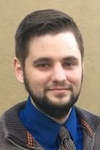Midwestern Workshop on Asymptotic Analysis
Indiana University–Purdue University Fort Wayne, October 7–9th, 2016
General Information

The goal of MWAA is to facilitate interactions between mathematicians from the midwestern United States working in approximation theory, mathematical physics, potential theory, and complex analysis by bringing them together in an informal way for a two day workshop. A major objective is to expose attending graduate students to different areas of analysis. We hope these meetings will help to strengthen the partnership and increase the collaboration between analysts in the midwest.
 This year the workshop is is supported by IPFW Office of Sponsored Programs, Simons Foundation, and National Science Foundation grant DMS–1650319. It will take place on IPFW campus. Local information page: Analysis Workshop. We would appreciate if you could help us to disseminate information about the workshop by printing and posting our poster at your department.
This year the workshop is is supported by IPFW Office of Sponsored Programs, Simons Foundation, and National Science Foundation grant DMS–1650319. It will take place on IPFW campus. Local information page: Analysis Workshop. We would appreciate if you could help us to disseminate information about the workshop by printing and posting our poster at your department.

The list of submitted abstracts can be found here and a photo album of the workshop can be found here.
Organizers

Speakers

Participants

Syracuse University
IUPUI
Oklahoma State University
University of Toronto
Towson University
Niagara University
Purdue University
Central Michigan University
IUPUI
University of Toledo
Central Michigan University
University of Kentucky
IUPUI
Purdue University
Central Michigan University
IUPUI
University of Wisconsin Madison
University of Toledo
University of Illinois at Chicago
Mathematical Reviews
Florida Atlantic University
Central Michigan University
Indiana University
Purdue University
Kent State University
Oklahoma State University
University of Michigan–Dearborn
Program

Friday

3:00—4:00pm
Registration table and snacks

4:00—5:00pm
The zeros of random harmonic polynomials
Joint work with Antonio Lerario
For analytic polynomials \( p \) and \( q \) with \( m = deg (q) < deg (p) = n \), how many zeros can \( p(z) + q(z) \) have? A lower bound of \( n \) follows from the generalized argument principle, and A.S. Wilmshurst used Bezout's theorem to give an upper bound of \( n^2. \) Wilmshurst conjectured that the true maximum is linear in \( n \) for \( m \) fixed. We will discuss the probabilistic version of this problem initiated by Wenbo Li and Ang Wei: How many zeros does a random harmonic polynomial have? The answer depends on the definition of “random” and we will discuss outcomes for three different ensembles.
Saturday

9:00—9:40am
Coffee and Welcome Announcements

09:40—10:20am
Quadrature domains in complex variables
A quadrature domain for square–integrable holomorphic functions is a domain on which integration of a function in the Bergman space coincides with a finite linear combination of point evaluations of the function and some of its derivatives. Planar quadrature domains have an elegant theory, but quadrature domains in several dimensions are not as well understood. I'll use the Bergman kernel to gain some beginning insights into how multi–dimensional quadrature domains might look.

10:30—11:10am
CR submanifolds with vanishing CR second fundamental forms
Joint work with Yuan Yuan
Various rigidity phenomena of CR maps between model CR manifolds have been investigated in literature. Due to the complexity of CR manifolds, such phenomena are in general not expected for general CR manifolds unless additional conditions are imposed. In this talk, we shall discuss a rigidity result for CR maps into hyperquadrics by imposing some geometric condition. More precisely, we show that all CR immersions from smooth Levi–nondegenerate hypersurfaces into hyperquadrics with vanishing CR second fundamental forms are necessarily linear fractional.

11:20am—12:00pm
Instability of steep ocean waves and whitecapping
Wave breaking in deep oceans is a challenge that still defies complete scientific understanding. Sailors know that at wind speeds of approximately 5m/sec, the random looking windblown surface begins to develop patches of white foam (“whitecaps”) near sharply angled wave crests. We idealize such a sea locally by a family of close to maximum amplitude Stokes waves and show, using highly accurate simulation algorithms based on a conformal map representation, that perturbed Stokes waves develop the universal feature of an overturning plunging jet. We analyze both the cases when surface tension is absent and present. In the latter case, we show the plunging jet is regularized by capillary waves which rapidly become nonlinear Crapper waves in whose trough pockets whitecaps may be spawned.

12:00—2:00pm
Lunch Break

2:00—2:40pm
On holomorphic isometries between bounded symmetric domains
The study of (local) holomorphic isometries between bounded symmetric domains has two motivations. One is rigidity/classification in the differential geometric point of view, in particular, the close relation to proper holomorphic maps, and the second one is from number theory. I will describe the recent developments on the extension and the rigidity for such maps and explain the connection to complex analysis, CR geometry and etc. The main results are joint works with M. Xiao on holomorphic isometries from the complex unit ball to type IV classical domains.

2:50—3:30pm
Geometric analysis on the Diederich–Fornæss index
Joint work with Krantz and Peloso
Geometric analysis in differential geometry was initiated by Shing–Tung Yau and is a powerful tool in Riemannian geometry. It has been used to solve many problems in Riemannian geometry. In the field of several complex variables, it was not the most popular weapon to attack questions. One of the reasons is that many problems in the several complex variables relates to some types of differential equations of complex–valued functions which is currently not well understood. In this talk, we consider problems in the Diederich–Fornæss index with a viewpoint of geometric analysis and see what we obtain.

3:30—4:00pm
Coffee Break

4:00—4:40pm
Local geodesics for plurisubharmonic functions
WWe apply technique of geodesics in the space of metrics on Kähler manifold to functions from Cegrell's classes on bounded domains of \({\mathbb C}^n\). Roughly speaking, a geodesic is the “best” transformation of a given function to another one. We show that the standard energy functional is linear along geodesics, and derive some consequences (e.g., a capacity variant of Brunn–Minkowski inequality) from that.

4:50—5:30pm
The dressing method and solutions to integrable systems
The dressing method is a way of constructing exact solutions to nonlinear integrable systems starting from their Lax representation. The input data is a d–bar problem that specifies the analytic behavior of the joint eigenfunction of the Lax operators. This method can be viewed as a nonlinear version of the D'Alembert method of solving the wave equation, and produces solutions locally in space and time. I will explain how the dressing method can be used to easily construct the soliton solutions of the KdV equation, and can also be used to study the closure of the set of soliton solutions. I will also describe a construction of a set of soliton–like solutions of the KP equation.
Sunday
9:00—9:20am
Coffee

09:20—10:00am
Time–evolving signal analysis
We discuss a new approach for processing time–evolving signals by employing a time–space trade off. The main motivation of the new dynamical sampling schemes is the possibility of compensation for insufficient spacial sampling density by involving samples obtained at later time instances. Successful reconstruction of spatially undersampled signals is directly related to establishing a frame from iterates of operators in the respective evolutionary system \(E\). We consider the problem of finding conditions on the operators and the sampling locations so that the set of iterates forms a (scalable) frame for \(E\).

10:10—10:50am
Asymptotic bounds for energy of spherical designs
Joint work with P. Dragnev, D. Hardin, E. Saff, and M. Stoyanova
A spherical \(\tau\)–design is a finite set \(C \subset \mathbb{S}^{n-1}\) such that the equality \[ \frac{1}{\mu({\bf S}^{n-1})} \int_{{\bf S}^{n-1}} f(x) d\mu(x)= \frac{1}{|C|} \sum_{x \in C} f(x) \] holds for all polynomials \( f(x) = f(x_1,x_2,\ldots,x_n)\) of degree at most \(\tau\) (i.e. the average of \(f\) over the set is equal to the average of \(f\) over \(\mathbb{S}^{n-1}\).
Given an (extended real–valued) function \(h(t):[-1,1] \to [0,+\infty]\), the \(h\)–energy of a spherical code \(C\subset \mathbb{S}^{n-1}\) is given by \[ E(n,C;h):=\sum_{x, y \in C, x \neq y} h(\langle x,y \rangle), \] where \(\langle x,y \rangle\) denotes the inner product of \(x\) and \(y\). The problems for minimizing energies are important and have many applications.
A natural problem is to estimate the potential energy of spherical designs of fixed dimension, strength and cardinality. Denote by \[ \mathcal{L}(n,N,\tau;h):=\inf \{E(n,C;h):|C|=N, \ C \subset \mathbb{S}^{n-1} \mbox{ is a \(\tau\)–design}\} \] and \[ \mathcal{U}(n,N,\tau;h):=\sup \{E(n,C;h):|C|=N, \ C \subset \mathbb{S}^{n-1} \mbox{ is a \(\tau\)–design}\} \] the minimum and the maximum possible \(h\)–energy of a spherical \(\tau\)–design of \(N\) points on \(\mathbb{S}^{n-1}\), respectively. Recently, we derived universal lower bounds on \(\mathcal{L}(n,N,\tau;h)\) and upper bounds on \(\mathcal{U}(n,N,\tau;h)\), which then define a strip where the energies belong.
We consider the behavior of our bounds in the asymptotic process where the strength \(\tau\) is fixed, and the dimension \(n\) and the cardinality \(N\) tend simultaneously to infinity in the relation \begin{equation} \label{asy-1} \lim_{n,N \to \infty} \frac{N}{n^{k-1}}= \begin{cases} \frac{2}{(k-1)!}+\gamma, & \tau=2k-1,\\[6pt] \frac{1}{k!}+\gamma, & \tau=2k, \end{cases} \end{equation} (here \(\gamma \geq 0\) is a constant and the terms \(\frac{2}{(k-1)!}\) and \(\frac{1}{k!}\) come from the Delsarte–Goethals–Seidel bound).
Theorem Let \(h\) be absolutely monotone on \([-1,1]\) and \(\tau\) be fixed. If \(n\) and \(N\) tend to infinity as in \eqref{asy-1}, then \[ \mathcal{L}(n,N,\tau;h)\ge h(0) N^2+o(N^2). \]
Other asymptotic bounds on \(\mathcal{L}(n,N,\tau;h)\) and \(\mathcal{U}(n,N,\tau;h)\) will be discussed as well and analogous results in binary Hamming spaces will be shown.
10:50—11:20am
Student Poster Display

11:20am—12:00pm
Fekete polynomials and Julia sets
Joint work with M. Younsi
We show that a nonempty, proper subset \(S\) of the complex plane is approximable (in a strong sense) by filled Julia sets of polynomials of degree at least \(2\) if and only if \(S\) is bounded and \(\mathbb{C} \setminus \textrm{interior}(S)\) is connected. The proof is constructive and uses Fekete polynomials. We construct a sequence of polynomials \((P_n)_{n \in \mathbb{N}}\), where \(P_n\) has degree \(n\), and prove that as \(n \rightarrow \infty\), the approximation of the set by filled Julia sets gets arbitrarily accurate. We also prove an estimate for the rate of approximation in terms of geometric and potential theoretic quantities. I will discuss these results, as well as tell you how to find a polynomial whose filled Julia set spells out your name.




